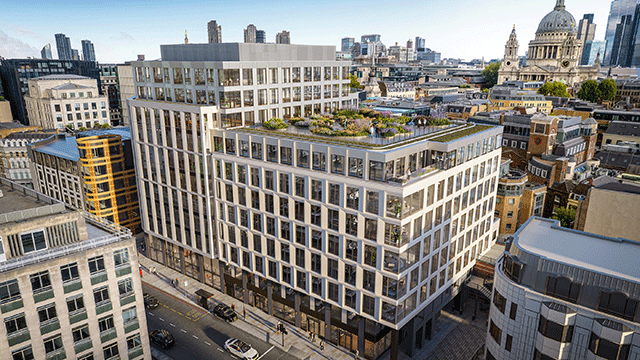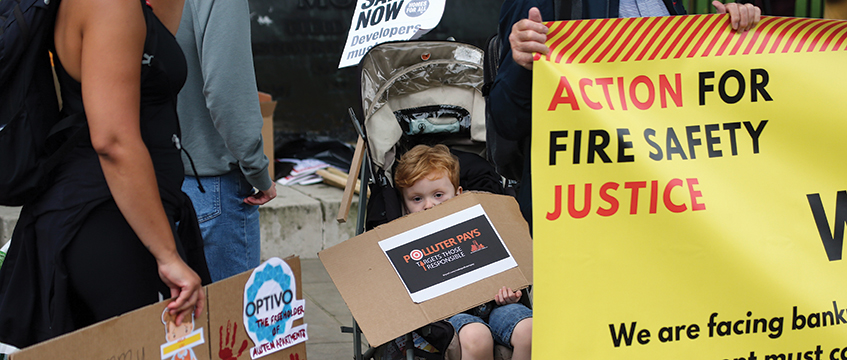Nigel Wray has a problem. The Prestbury Holdings director has garnered a reputation over the past 25 years for canny stake building and a nose for a good property deal – characteristics that helped him to the 111th spot in last month’s EG Rich List.
But now Wray has turned occupier. And he is having a little difficulty in finding a landlord willing to give him 10,000 sq ft in central London, in perpetuity, for little or no rent.
This is all because Wray, who sold Nottingham Forest football club but owns the Zurich Premiership rugby club Saracens, is a sports nut. This passion, combined with a keen investment brain, has led the 57-year-old to build up a collection of sports memorabilia that would make anyone who ever swapped football cards as a child weep with envy.
And herein lies the problem. Wray’s 4,500-item, multi-million-pound collection, which ranks among the world’s finest, has started to take over the garage of his mansion in leafy Totteridge, north London. It is crying out for a home of its own. At the same time, Wray’s mind is turning to posterity: “The collection is something I want people to see and that I would like preserved after I’m gone,” he says, when EG catches up with him at his sports-memento-festooned offices in Cavendish Square in London’s West End.
Prestbury and Saracens partner Nick Leslau is on hand to fill in the property details. “We’re looking for someone able to offer what would be a non-profit, permanent home for the collection,” he says.
There has been some interest already, but Wray and Leslau are being picky. “We’ve looked at a couple of places, but we haven’t found anything that’s both of gallery proportions and isn’t cripplingly expensive to rent.
Cavernous basement preferred
“We think it should probably be in London and a space that has a limited alternative commercial use. It could, for instance, be a cavernous basement. But we need around 10,000 sq ft of good, walled space.”
The reason for wanting a basement isn’t solely because it would be cheaper. Wray points out that the collection will need to be shielded from natural sunlight as it includes hundreds of rare shirts, significant oil paintings and poster art.
“We also envisage particular items – for instance, Harold Larwood’s bat from the Bodyline tour of Australia – being placed beside a video display of the tour,” says Wray.
“We feel the opportunity should appeal to a local authority or town hall. It could put a place on the map.”
Leslau and Wray suggest that the star items should have their own rooms. “The collection could be integrated into a sporting club to create a kind of Groucho Club of sport, featuring specific rooms like the WG Grace room,” says Leslau.
Even the minor items in the collection have fascinating associations for anyone with even the slightest interest in sport or social history. “There are some great stories here,” says Leslau. “For instance, we have the cricket ball from the first-ever drawn test match – a 1960 match between the West Indies and Australia. What’s interesting is that it is signed by the West Indies’ last-ever white captain, FCM Alexander, and its first ever black captain, Frank Worrell.”
Wray admits that the mystique of such items is a strange thing. “Sometimes I wonder whether they are that important in the great scheme of things,” he muses. “But I guess history draws us to it and that is no less true with its great sporting triumphs.”
*Anyoneinterested in housing Nigel Wray’s sports collection should contact Nick Leslau at Prestbury Holdings.
|
There is nothing indiscriminate or magpie-like about Wray’s collection. He doesn’t have anything that isn’t historic – Botham’s Ashes is about as contemporary as this collection gets – and he isn’t particularly interested in anything other than the school staples of football, cricket and rugby. “I’m not really interested in modern sporting artefacts. The value is less. Players have become wise to the situation. In the past, they only had one jersey or kit, but today’s players typically wear three for every match and most hang on to the important kits for their benefit matches. Older items with provenance are far more rare because there was no reason to hold on to them.” Despite the recent increase in the value of Wray’s collection, he insists that selling is not an option. “Yes, I am an investor and I think with an investment mind but I’ve virtually never sold from this collection. Selling anything would amount to a failure.” Cricket The greatest prize is the bat Ian Botham used to turn the 1981 Ashes tour on its head during the third test at Headingley. The 149 not out Botham scored that day is, as Wray says, “one of those moments where everyone knows where they were when it happened”. Contact with such items brings great sporting achievements to life, says Wray. “I also own the bat that Walter Hammond used in 1933 in Auckland. He scored 336 not out and beat Donald Bradman’s record test score. It’s incredible how light and small it is – it’s surprising he could hit a ball with it.” Another cricket gem is the only oil painting of WG Grace specified in the great man’s will. The Ernest Brewin painting, which Grace left to his son, is the WG we all know – a giant, bearded man keeping his trousers up with the help of an MCC tie. “One of the most important cricketing studies of all,” says a wistful Wray. |
|
Rugby The star items are probably a black and white New Zealand rugby union international shirt from the All Blacks’ 1905 first tour of Britain; a programme and invitation to the after-match dinner from the first-ever Calcutta match in 1878; and the Springbok fly-half Paddy Calloran’s daily diary during South Africa’s 1906 tour of Britain. “Such items take you back and make you wonder what the world was like in another time,” says Wray. “According to the diary – and remember this was not long after the Boer War – the Springbok team began its tour by walking 2 miles from Northampton station to the Great Midlands hotel. They were surrounded by cheering crowds the entire way.” Football For football fans, there’s the No 6 shirt Bobby Moore donned during England’s 1970 World Cup group three match with Brazil, the one where Moore made his famous tackle on Pele before the two swapped jerseys. And there’s also Sir Stanley Matthews’ 1953 FA Cup Final strip, worn by the legendary winger for Blackpool in what has become known as “The Matthews Final”, after he helped his team to turn a 3-1 lead to Bolton into a 4-3 win for Blackpool. So how much are such items worth? Wray doesn’t go into prices but admits that the value of sports memorabilia has risen astronomically since he first started collecting, driven by “Sky’s popularising of sport and its increased celebrity value”. To give an idea of values, Wray points to Alan Ball’s World Cup final shirt from 1966. “That was bought at auction for £170,000 recently, so imagine what Bobby Moore’s World Cup final shirt would fetch if it hadn’t disappeared without trace. After all, he was the icon for what will probably be the only time England wins the World Cup.” |










